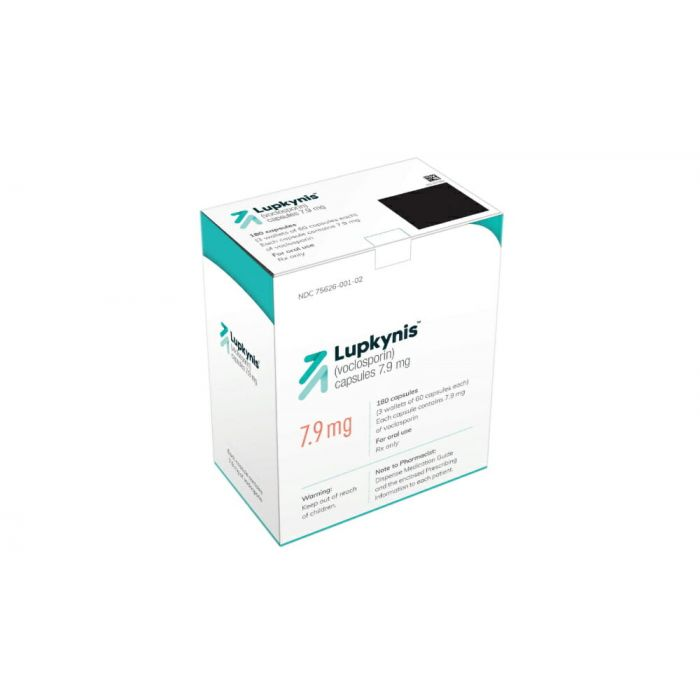What is Lupkynis (voclosporin) for?
Lupkynis (voclosporin) is a calcineurin-inhibitor immunosuppressant indicated to treat adults with active lupus nephritis (LN). It is taken in combination with standard of care therapies and works by suppressing the immune system.[1]
Lupkynis (voclosporin) should not be taken with a medicine called cyclophosphamide.[1]
It is available in capsule form, each containing 7.9 mg voclosporin.[1]
How does Lupkynis (voclosporin) work?
Approximately 50% of people with the autoimmune disease systemic lupus erythematosus (SLE) will develop lupus nephritis (LN). LN is an inflammation of the kidneys, which causes irreversible kidney damage and significantly increases the risk of kidney failure, cardiac events, and death.[2]
Voclosporin can inhibit a protein in the body called calcineurin. Calcineurin is a protein that can activate T cells of the body’s immune system. By binding and blocking calcineurin, voclosporin can stop T cells from initiating an autoimmune response, and thereby reduce inflammation and damage to the kidneys.[2,3]
Where has Lupkynis (voclosporin) been approved?
Lupkynis (voclosporin) was approved for the treatment of people with active LN by:
- The Food and Drug Administration (FDA), USA on January 22, 2021.[4]
Lupkynis (voclosporin) was approved under Priority Review and was previously granted Fast Track designation by the FDA in 2016.[4]
Please note that this medicine may have also been approved in other regions than the ones we’ve listed. If you have a question about its approval in a specific country feel free to contact our support team.
How is Lupkynis (voclosporin) taken?
The standard dosage is:[1]
- 23.7 mg (3 capsules) as a starting dose, taken orally twice a day
It it used in combination with current standard of care of mycophenolate mofetil (MMF).[1]
The tablets must be swallowed whole on an empty stomach, either 1 hour before or 2 hours after a meal and as close to a 12-hour schedule as possible (with at least 8 hours between doses).[1]
Before starting with Lupkynis (voclosporin) treatment, an accurate baseline estimated glomerular filtration rate (eGFR) should be established. Dosage of this medicine is based on the patient’s eGFR. Your treating doctor may change your dose, if needed. During the course of treatment, eGFR and blood pressure should be monitored regularly.[1]
Lupkynis (voclosporin) may affect the way other medicines work, and other medicines may affect how this medicine works, so it is important that you inform your doctor about all medicines you take.[1]
Complete information about Lupkynis (voclosporin) dosage (modifications) and administration can be found in the official prescribing information listed in our references section.[1]
Note: Please consult with your treating doctor for personalised dosing.
Are there any known adverse reactions or side effects of Lupkynis (voclosporin)?
Common adverse reactions
The most common side effects ( ≥3% of patients) listed in the prescribing information include:[1]
- Diarrhea
- Headache
- Cough
- Urinary tract infection
- Stomach pain
- Heartburn
- Loss of hair (alopecia)
- High blood pressure (hypertension)
- Low red blood cell count (anemia)
- Mouth ulcers
- Tiredness (fatigue)
Serious adverse reactions
The serious adverse reactions listed in the prescribing information include:[1]
- Increased risk of cancer
- Increased risk of infection
- Kidney problems
- Nervous system problems




Reviews
There are no reviews yet.